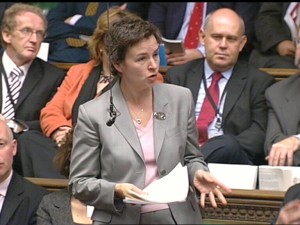
Sarah Childs, Professor of Politics and Gender
In 1997 an unprecedented number of women MPs – 120 – were elected to the UK House of Commons; 101 of these came from a single party. So ‘what difference’ did women’s presence make?’ An easy question to ask, but one that is now widely recognised to hide more than it reveals. Politics is not like physics – there is no magic point (critical mass) where women MPs are suddenly able to transform (or in more academic language) ‘feminise’ politics. Looking back over the New Labour years in Government, it is evident that Labour’s women MPs entered a House not only over-represented by men but one which was famed for its historic traditions dominated by masculinised structures and norms. The new women MPs arriving in Westminster in 1997 found themselves negotiating a ‘gendered institution’.
From speaking with many of Labour’s 1997 intake of women MPs – in 1997, 2000 and 2009 – their ability to act in Parliament, both when they are explicitly ‘acting for’ women and in being able to perform their other representational duties, is enhanced by their friendships with other Labour women MPs. There is little evidence of cross party friendships. The women met socially in the House, they offered each other shoulders to cry on and they were prepared to act politically for each other. In this way, Labour’s women MPs’ friendships can be said to constitute a practice that reflects and seeks to counter their gendered experiences of British party and parliamentary politics. More concretely, a shared sense of identity and experiences manifested through friendships can be thought of, at least in certain circumstances, to enable women MPs to better inhabit and operate within the House of Commons.
Many of the women positively experience their group identity as Labour women MP, as a number of women suggest:
The 1997 intake was very special;
We’d been through a lot to get…elected;
There was camaraderie between us that will never go;
There’s a bit of a sense of sisterhood…about the person[al] is political
They supported fellow women in a pastoral or personal sense
Hugging a woman in the tea room;
Sending a note or a text;
The mutual support we had from one another;
Their friendship also has a distinctly political dimension
Getting [other women’s] insight on how to vote;
Support[ing] your position;
Sign[ing] their Early Day Motions.
And then there is the ‘Chamber moment’ – where women MPs support an embattled colleague, or Minister who has newly resigned, by sitting around them on the green benches, showing both a personal and political dimension.
The form and the importance of the Labour women’s friendships was felt to be distinct by the women MPs because they inhabited a very particular place, the Palace of Westminster: the extended hours of being at Westminster; a parliamentary culture that is highly competitive; and an explicitly gendered environment, with particular criticism levelled at the women. In one MP’s words, women face a ‘baying mob’. A second speaks of Tory men ‘ganging up on women’.
Notwithstanding the positive resource that Labour’s women’s friendships constituted, print media representations of Labour women’s and men’s friendships in the UK Parliament frequently problematised the women’s friendship: their friendships were too often ‘fake’ – similar to those of ‘bitchy’ girls in the playground. Secondly women’s friendships are ‘disturbing’ – they threaten the dominant basis of political association within the UK, namely left/right ideological divisions. Instead, Labour’s women put sex identity before party identity. They mobilised as women within their own party and mobilised on the basis of inhabiting a House that marginalises them and women’s issues and interests. And if more than a few women dined out in the Palace, it was assumed that a feminist coup against the party leadership was afoot – variously described as a cashmere, petticoat, powder puff, or Pugin Room plot.
One characteristic of Labour’s time in office between 1997-2010 was, then, a women’s parliamentary friendship amongst new Labour women MPs. This had both a personal and political dimension; it reflected their gendered experiences as women in UK parliamentary politics. And as a resource, women’s parliamentary friendships helped Labour’s women MPs better act in Parliament.
This blog is based on: Childs, S. (2013) ‘Negotiating Gendered Institutions: Women’s Parliamentary Friendships’, Politics and Gender, 9: 127-151

